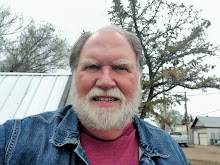Much of my time from 2008 to 2010 was spent taking courses from Athabasca University. I thought that it might be interesting to convert some of the essay assignments – such as this one – into blog postings.
One course was called Writing Creative Non-Fiction. The assignment for this essay was a detailed reading analysis.
My essay subject was The Night My Mother Met Bruce Lee by Paisley Rekdal.
As I read a story, I attempt to anchor it within the frame of my own life. I compare times and places. Internet research reveals that in 1959, Bruce Lee was 18 and working at Ruby Chow’s Restaurant in Seattle. The mother in the story must therefore be ten years older than I. In my personal 1959 life, I was tormenting the only Chinese student in my second-grade classroom until she wrassled some boy to the ground. That proved her ability at “judo”. After that, she had many friends. In addition, from a young age, I’ve spent days in cheap restaurants eating chow mien drenched in soy sauce while drinking cup after cup of hot green tea. From my experience, this story illustrates a very real time and place.
The first thirteen paragraphs occupy almost two pages with some long descriptive sentences. The first sentence is 41 words and sloshes around like the weak tea that it contains. Red tubs, teacups and rice clumps are all glued into that single sentence. In the next few lines, the characters, including a gaggle of cousins and aunties, are introduced.
The restaurant setting is described simply in a few words as having “red napkins, red walls, red carp in the tank”. Later on, Bruce Lee compares it dismissively with the “real Chinese” in Hong Kong. The action is more important than the setting. The mother’s physical appearance gets no description at all.
The author uses more space describing the seemingly irrelevant tale of the soy sauce bottles, than she spends describing the restaurant or even the meeting with Bruce Lee. This paragraph—the one immediately after she reveals that her mother is “practical in all things”—is my favourite. She starts with a 14 word sentence, “So it’s the University of Washington in two years with a degree in education”. Then a brief dramatic “Fine. She slams down full vials of soy sauce…”. The mother plays the role of obedient student. But her anger, like that “black, sweet-smelling pool on the white tablecloth” attempts to escape. The final paragraph sentence is an emphatic “Smith is not for girls like her.”
I like how the mother’s feelings are revealed without explicit description. The author could have used words such as “angrily” or a phrase like “she thought of her decision” while she cleared the stuck chewing gum. Instead, she reveals thoughts and emotion through action and scene description.
Another lovely paragraph is the short twelfth one that starts with the quote, “It’s all the rage in China” and follows that with a longer sentence about words getting repeated and “coming out another way”. In the final two sentences of the paragraph, the opening words come out written in another way. “All the rage. In China.” This is clever writing.
The first section of the story is told in an omniscient adult voice talking mainly in long clever sentences. It ends with a description of the door repeatedly going “back and forth”. This repetition implies passing time, which allows the coming big jump in time to arrive without surprise.
The final seven paragraphs are short and take up little more than a half page. The sentences are short. The description is brief. It has the language and cadence of a thirteen year old girl.
During this story the mother’s determination, learning abilities, work ethic and teaching career are all shown. She fights to get ahead, sometimes in opposition to people such as the guidance counsellor who denies “the dream of Smith”. Yet to the daughter, the “now officially only cool thing” about her mother is a brief connection to Bruce Lee. At the beginning the mother is age sixteen, setting tables as might any teenager. At the very end—from the daughter’s viewpoint—a light flicker reveals her to be once again ordinary.
This story is a good example of writing a concise story by making every word matter. (My own personal writing has a tendency to ramble about). Explaining with action is much more interesting than straight forward literal description.

No comments:
Post a Comment